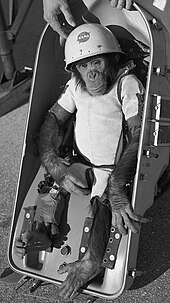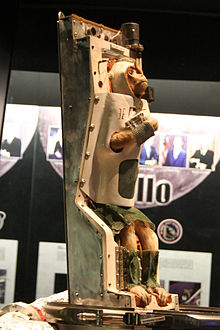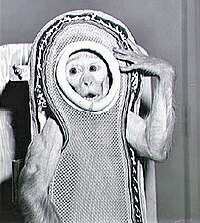Monkeys and apes in space
|
Read other articles:

Disambiguazione – Se stai cercando il gruppo hard rock statunitense, vedi Halestorm. Questa voce o sezione sull'argomento gruppi musicali britannici non cita le fonti necessarie o quelle presenti sono insufficienti. Puoi migliorare questa voce aggiungendo citazioni da fonti attendibili secondo le linee guida sull'uso delle fonti. Segui i suggerimenti del progetto di riferimento. AlestormGli Alestorm al Wacken Open Air 2018 Paese d'origine Regno Unito Genere[1]Folk metalPo…

Sceaux 行政国 フランス地域圏 (Région) イル=ド=フランス地域圏県 (département) オー=ド=セーヌ県郡 (arrondissement) アントニー郡小郡 (canton) 小郡庁所在地INSEEコード 92071郵便番号 92330市長(任期) フィリップ・ローラン(2008年-2014年)自治体間連合 (fr) メトロポール・デュ・グラン・パリ人口動態人口 19,679人(2007年)人口密度 5466人/km2住民の呼称 Scéens地理座標 北緯48度46�…

English publisher and scholar 1856–1910 For the English architect and artist, see Alfred Young Nutt. Alfred NuttPortrait of Nutt from his obituary in Folk-LoreBornAlfred Trübner Nutt(1856-11-22)22 November 1856London, EnglandDied21 May 1910(1910-05-21) (aged 53)Melun, FranceOccupation(s)Publisher, folklorist, scholarSpouse Marie Louise Gelly (m. 1885)Children2ParentDavid Nutt (father)RelativesWilliam Miller (great-grandfather)Signature Alfred Trübner Nutt …

Reform synagogue in Manhattan, New York This article is about the synagogue building. For the congregation that worships in the synagogue, see Congregation Emanu-El of New York. Temple Emanu-ElSynagogue façade on the Upper East SideReligionAffiliationReform JudaismEcclesiastical or organisational statusSynagogueOwnershipCongregation Emanu-El of New YorkStatusActiveNotable artworksMosaics by Hildreth MeièreLocationLocation1 East 65th StreetMunicipalityManhattanStateNew YorkCountryUnited StatesL…

关于与「华盛顿州」標題相近或相同的条目页,請見「华盛顿」。 此條目介紹的是美國西北部太平洋沿岸的州。关于与之同名的美国首都所在地,请见「華盛頓哥伦比亚特区」。 此條目需要擴充。 (2007年9月26日)请協助改善这篇條目,更進一步的信息可能會在討論頁或扩充请求中找到。请在擴充條目後將此模板移除。 华盛顿州 美國联邦州State of Washington �…
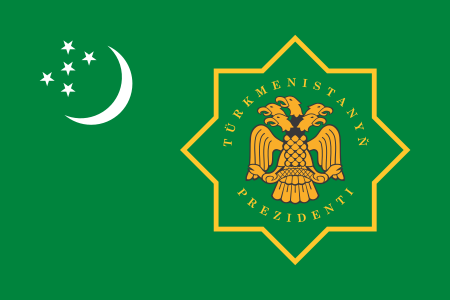
土库曼斯坦总统土库曼斯坦国徽土库曼斯坦总统旗現任谢尔达尔·别尔德穆哈梅多夫自2022年3月19日官邸阿什哈巴德总统府(Oguzkhan Presidential Palace)機關所在地阿什哈巴德任命者直接选举任期7年,可连选连任首任萨帕尔穆拉特·尼亚佐夫设立1991年10月27日 土库曼斯坦土库曼斯坦政府与政治 国家政府 土库曼斯坦宪法 国旗 国徽 国歌 立法機關(英语:National Council of Turkmenistan) 土�…

Erwin GutawaLahirErwin Gutawa Sumapradja16 Mei 1962 (umur 62)Jakarta, IndonesiaKebangsaanIndonesiaNama lainErwin GutawaAlmamaterFakultas Teknik Universitas IndonesiaPekerjaanAktormusikuskomponispenulis laguproduser rekamanTahun aktif1985–sekarangSuami/istriLutfi Andriani (m. 1992)Anak Aluna Sagita Gutawa Aura Aria Gutawa Karier musikGenrePopjazzInstrumenBasskiborpianoArtis terkaitKarimataChrisyeHarvey MalaiholoKrisdayantiRossaRuth SahanayaTiti Dwi …

Artikel ini bukan mengenai Roti bakar. Roti panggangPerbedaan roti panggang dengan roti tawar biasa, sebelum dipanggang (kiri) dan sesudah dipanggang (kanan)Nama lainToastJenisRotiSuhu penyajianPanasBahan utamaRoti atau Roti irisSunting kotak info • L • BBantuan penggunaan templat ini Buku resep: Roti panggang Media: Roti panggang Roti panggang (bahasa Inggris: toast) merujuk kepada kepingan roti yang dipanggang dengan proses radiasi termal sehingga roti menjadi lebih kec…

Jewish ethnic subdivision Ethnic group Kurdish Jews in IsraelTotal population150,000 - 300,000[1][2][3]Regions with significant populationsMainly Jerusalem, also Tel Aviv and many other places.LanguagesHebrew (Main language for all generations); Older generation: Kurdish language, Judeo-AramaicReligionJudaism Part of a series on: Kurdish history and Kurdish culture People List of Kurds Population Homeland Kurdistan Turkey (Northern Kurdistan) Iran (Eastern Kurdista…

Soffitto, Santa Maria in Trivio, Roma Antonio Gherardi, già Tatoti (Rieti, 20 settembre 1638 – Roma, 10 maggio 1702) è stato un pittore e architetto italiano. Indice 1 Vita e opere 2 Note 3 Bibliografia 4 Altri progetti 5 Collegamenti esterni Vita e opere Antonio Tatoti nacque a Rieti, segnalatosi come una promessa della pittura fu preso sotto la protezione del Governatore reatino Bulgarino Bulgarini, che lo spedì a Roma nel 1656. Qui venne a contatto con la grande pittura barocca e fu alli…

Parish in Louisiana, United States Parish in LouisianaSt. John the Baptist ParishParishSan Francisco Plantation HouseMotto: Heart of the River ParishesLocation within the U.S. state of LouisianaLouisiana's location within the U.S.Coordinates: 30°07′N 90°30′W / 30.12°N 90.5°W / 30.12; -90.5Country United StatesState LouisianaFounded1807Named forSt. John the Baptist Catholic Church in Edgard, built 1772SeatEdgardLargest communityLaPlaceArea •&#…

Dravidian language of India Betta Kurumbaಬೆಟ್ಟ ಕುರುಬவேட்டை குறும்பர்Native toIndiaRegionNilgiri mountains (Tamil Nadu, Karnataka, Kerala)Native speakers32,000 (2003)[1]Language familyDravidian South DravidianSouth Dravidian ITamil–KannadaBadaga–KannadaKannadoidBetta KurumbaWriting systemKannada scriptMalayalam scriptTamil scriptLanguage codesISO 639-3xubGlottologbett1235ELPBetta Kurumba The Betta Kurumba language (Beṭṭa …

العلاقات الإسبانية الإيطالية إسبانيا إيطاليا إسبانيا إيطاليا تعديل مصدري - تعديل العلاقات الإسبانية الإيطالية هي العلاقات الثنائية التي تجمع بين إسبانيا وإيطاليا.[1][2][3][4][5] مقارنة بين البلدين هذه مقارنة عامة ومرجعية للدولتين: وجه المق…
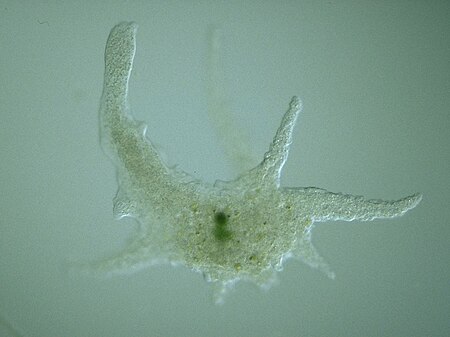
Artikel atau sebagian dari artikel ini mungkin diterjemahkan dari Amoebozoa di en.wikipedia.org. Isinya masih belum akurat, karena bagian yang diterjemahkan masih perlu diperhalus dan disempurnakan. Jika Anda menguasai bahasa aslinya, harap pertimbangkan untuk menelusuri referensinya dan menyempurnakan terjemahan ini. Anda juga dapat ikut bergotong royong pada ProyekWiki Perbaikan Terjemahan. (Pesan ini dapat dihapus jika terjemahan dirasa sudah cukup tepat. Lihat pula: panduan penerjemahan arti…

Saint Thomian lawyer and politician This article includes a list of general references, but it lacks sufficient corresponding inline citations. Please help to improve this article by introducing more precise citations. (March 2013) (Learn how and when to remove this message) Victor FrazerDelegate to the U.S. House of Representativesfrom the U.S. Virgin Islands' at-large districtIn officeJanuary 3, 1995 – January 3, 1997Preceded byRon de LugoSucceeded byDonna Christian-Christensen Pers…

US military installation in Washington, DC Joint Base Anacostia–BollingSouthwest Washington, D.C. in the United StatesView of Joint Base Anacostia–Bolling from across the Potomac River during 2013.JB Anacostia–BollingLocation in the United StatesCoordinates38°50′34″N 077°00′58″W / 38.84278°N 77.01611°W / 38.84278; -77.01611 (JB Anacostia–Bolling)TypeUS military Joint BaseSite informationOwnerDepartment of DefenseOperatorUS Air ForceControl…

Upcoming film by Jon Watts WolfsDirected byJon WattsWritten byJon WattsProduced by George Clooney Grant Heslov Brad Pitt Dede Gardner Jeremy Kleiner Dianne McGunigle Jon Watts Starring George Clooney Brad Pitt Amy Ryan Austin Abrams Poorna Jagannathan CinematographyLarkin SeipleEdited byAndrew WeisblumProductioncompanies Apple Studios Plan B Entertainment Smokehouse Pictures Distributed byColumbia Pictures (through Sony Pictures Releasing)[1]Release date September 20, 2024 …

大韓體育會大韓體育會會徽成立時間1920年總部 韩国首爾會長李起兴秘書長钟柳泉網站官方網頁奥林匹克委员会信息國家或地區 韩国IOC編碼KOR加入IOC1948年区域组织亞洲奧林匹克理事會 2018年冬季奥林匹克运动会 申辦過程 比賽場館 火炬接力 吉祥物 轉播商 開幕典禮(入場旗手) 赛事焦点 奖牌榜(奖牌得主) 世界及奥运纪录 相關問題 閉幕典禮(入場旗手) 帕運會 IOC KO…

Main article: 2008 United States presidential election 2008 United States presidential election in Ohio ← 2004 November 4, 2008 2012 → Nominee Barack Obama John McCain Party Democratic Republican Home state Illinois Arizona Running mate Joe Biden Sarah Palin Electoral vote 20 0 Popular vote 2,940,044 2,677,820 Percentage 51.50% 46.91% County Results Congressional District Results Precinct Results Obama 40-50% 50-60% &…
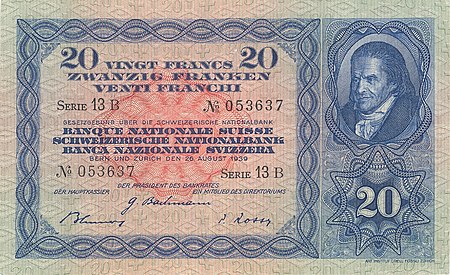
ペスタロッチ ヨハン・ハインリヒ・ペスタロッチ(Johann Heinrich Pestalozzi イタリア語: [pes.ta.ˈlɔt.tsi] ドイツ語: [pɛstaˈlɔtsi] ( 音声ファイル), 1746年1月12日 - 1827年2月17日)は、スイスの教育実践家、シュタンツ、イヴェルドン孤児院の学長。フランス革命後の混乱の中で、スイスの片田舎で孤児や貧民の子などの教育に従事し、活躍の舞台として、スイス各地にま�…
